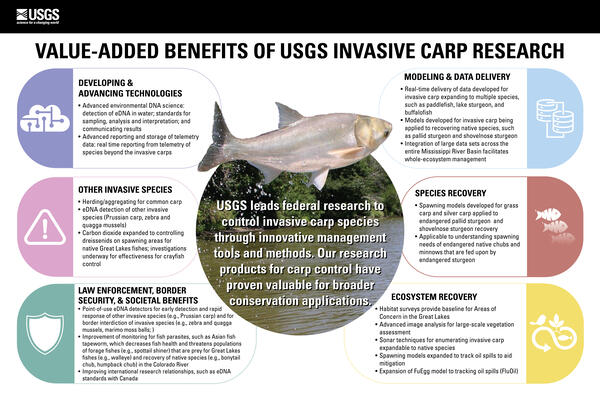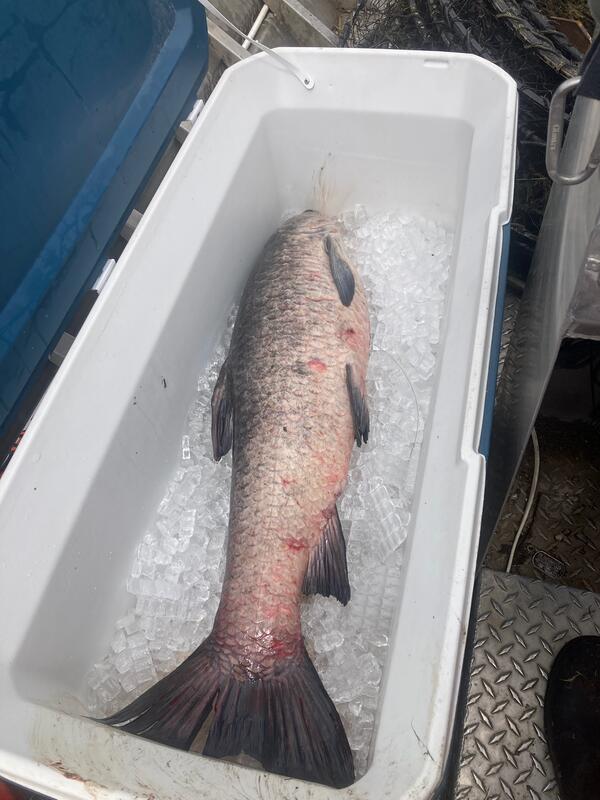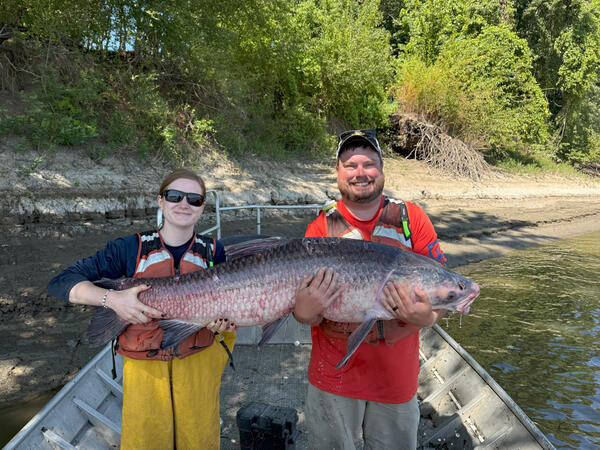Value-added Benefits of USGS Invasive Carp Research
Value-added Benefits of USGS Invasive Carp ResearchThe USGS leads federal research to control invasive carp species through innovative management tools and methods. Our research products for carp control have proven valuable for broader conservation applications.
DEVELOPING & ADVANCING TECHNOLOGIES












